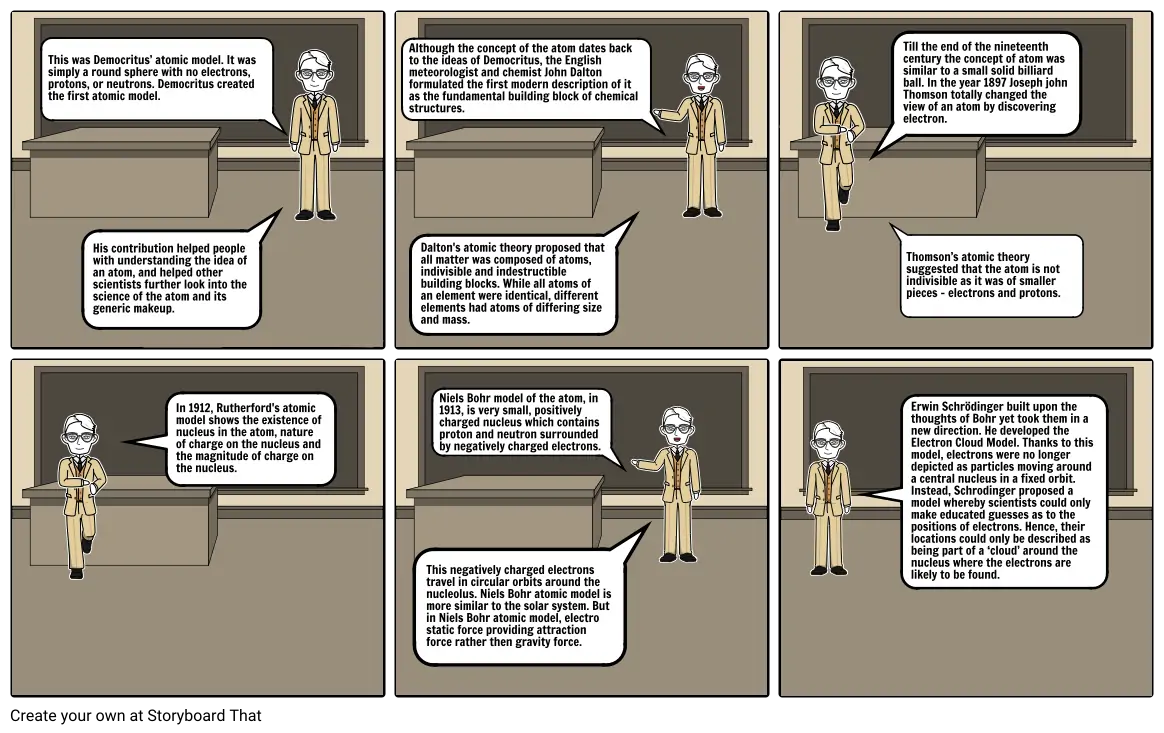Atomic Model_Sean Cruz

Storyboard Text
- According to Democritus, 1.All matter consists of invisible particles called atoms. 2. Atoms are indestructible. 3. Atoms are solid but invisible. 4. Atoms are homogenous. 5. Atoms differ in size, shape, mass, position, and arrangement. ->Solids are made of small, pointy atoms. ->Liquids are made of large, round atoms. ->Oils are made of very fine, small atoms that can easily slip past each other.
- This was Democritus’ atomic model. It was simply a round sphere with no electrons, protons, or neutrons. Democritus created the first atomic model.
- His contribution helped people with understanding the idea of an atom, and helped other scientists further look into the science of the atom and its generic makeup.
- Although the concept of the atom dates back to the ideas of Democritus, the English meteorologist and chemist John Dalton formulated the first modern description of it as the fundamental building block of chemical structures.
- Dalton's atomic theory proposed that all matter was composed of atoms, indivisible and indestructible building blocks. While all atoms of an element were identical, different elements had atoms of differing size and mass.
- Till the end of the nineteenth century the concept of atom was similar to a small solid billiard ball. In the year 1897 Joseph john Thomson totally changed the view of an atom by discovering electron.
- Thomson’s atomic theory suggested that the atom is not indivisible as it was of smaller pieces – electrons and protons.
- In 1912, Rutherford's atomic model shows the existence of nucleus in the atom, nature of charge on the nucleus and the magnitude of charge on the nucleus.
- This negatively charged electrons travel in circular orbits around the nucleolus. Niels Bohr atomic model is more similar to the solar system. But in Niels Bohr atomic model, electro static force providing attraction force rather then gravity force.
- Niels Bohr model of the atom, in 1913, is very small, positively charged nucleus which contains proton and neutron surrounded by negatively charged electrons.
- Erwin Schrödinger built upon the thoughts of Bohr yet took them in a new direction. He developed the Electron Cloud Model. Thanks to this model, electrons were no longer depicted as particles moving around a central nucleus in a fixed orbit. Instead, Schrodinger proposed a model whereby scientists could only make educated guesses as to the positions of electrons. Hence, their locations could only be described as being part of a ‘cloud’ around the nucleus where the electrons are likely to be found.
Over 30 Million Storyboards Created
No Downloads, No Credit Card, and No Login Needed to Try!
